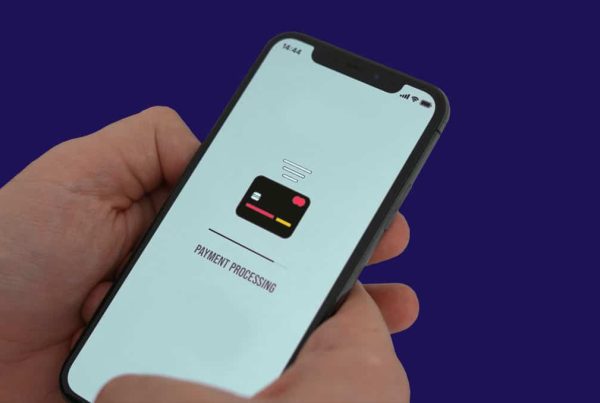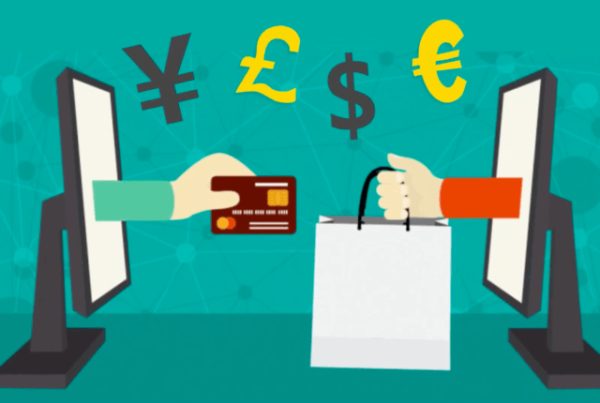Banks and payment processors are two key players in the financial industry that work together to facilitate transactions between consumers and businesses.
Although banks and payment processors are closely tied, how they operate is fundamentally different.
Let’s look at some definitions before we explore what sets these two apart.
Bank Defined
Banks are financial institutions that hold and manage funds on behalf of customers and merchants. For our purposes here, there are two kinds of banks—issuing banks and acquiring banks.
Issuing Bank
An issuing bank is an integral part of the payment chain that allows merchants to process credit and debit card payments.
When a customer makes a payment using their credit or debit card, the issuing bank receives an authorization request from the merchant’s payment processor and then approves or declines the transaction.
The issuing bank then sends the necessary funds to the merchant’s payment processor.
Acquiring Bank
An acquiring bank (also known as a merchant bank) is a financial institution that processes and settles payment card transactions on behalf of merchants.
When a customer makes a payment with a credit or debit card, the acquiring bank receives the funds from the merchant’s payment processor, after which the merchant can access the money, minus any applicable fees.
Payment Processor Defined
A payment processor is a company that provides the technology and infrastructure necessary to process and facilitate electronic payments between buyers and sellers.
What Is The Difference Between A Bank and A Payment Processor?
Now all this is well and good, but you’re probably still wondering, what exactly is the difference between a bank and a payment processor?
Here is the condensed answer:
Banks offer a variety of financial services that run well beyond the scope of payment processors. These include providing loans, offering savings and checking accounts, and issuing credit cards.
Furthermore, the core purpose of a merchant’s bank is to provide the seller with a merchant account so that they can take credit and debit card payments.
Payment processors, on the other hand, are responsible for managing the technical processing of credit and debit card payments, as well as payments made through virtual terminals.
They offer a range of payment solutions, including credit and debit card processing, e-wallets, and mobile payments, but they do not provide loans, offer checking accounts, etc.
Oddly enough, banks rarely process payments directly, opting instead to use third-party experts to do the heavy lifting.
More About Banks and Payment Processors
We hope you found the above information helpful. Keep reading to learn more about banks and payment processors.
Acquiring Bank vs. Issuing Bank
An issuing bank is what the customer uses, while an acquiring bank is what the merchant uses.
How The Payment Process Works
When a customer makes a purchase, their bank sends money to the merchant’s bank, but not before the merchant’s payment processor sends out a transaction authorization through the payment processing network.
After the customer’s bank receives the transaction request, they either approve or deny it based on whether the customer has the necessary funds available.
The transaction is then sent back through the payment processing network to the payment processor and then onto the merchant.
Assuming the transaction is approved, during this process, an approval code is passed through the processor to the merchant.
The Payment Processor Is The Key Joint
It’s at this point that the customer’s bank sends money to the merchant’s bank but NOT directly.
The money first goes to the merchant’s payment processor and is held there until the merchant sends out what’s known as a “batch,” which contains all of their transaction information for the day. In other words, all their sales information.
The merchant sends this information directly to their payment processor, where it will be used to deposit the held money into the merchant’s bank account.
The final step in the process is for the issuing bank to send a bill to the buyer.
Interchange Fees
It’s important to note that payment processors charge interchange fees to merchants for processing credit and debit card transactions.
These fees typically include the interchange fee amount required by the card networks, as well as additional fees charged by the payment processor for their services.
Interchange fees vary depending on the card network, the type of card used (credit or debit), the merchant category code (MCC) of the business, and other factors.
Learn More About Pixxles Pricing
For information about Pixxles’ pricing, see our Payment Processing Pricing page.
Who Pays Interchange Fees?
Any business that accepts credit or debit card payments is required to pay interchange fees. The only way to avoid these is not to accept credit cards, which of course, is out of the question for most businesses.
Debit cards, however, do have lower interchange fees, so it’s possible to reduce how much you’re spending in fees by having your customers pay through debit.
Interchange fees are necessary because they are a key component of the payment processing ecosystem.
They provide the necessary funding to support the technology and infrastructure required to facilitate electronic payments.
Definitions of Issuer Processor and Merchant Acquirer Clarified
You sometimes hear people use the term issuer processor, which, depending on how it’s used, could just be another word for a payment processor.
An issuer processor does, however, have a different function than a payment processor.
What An Issuer Processor Does
An issuer processor is responsible for facilitating the issuance and management of payment cards such as credit, debit, and prepaid cards.
They provide banks with the technology and infrastructure needed to issue cards, authenticate transactions, and manage cardholder data. Additionally, they handle tasks such as card authorization, settlement, and fraud detection.
By contrast, a payment processor facilitates transactions between buyers and sellers—as mentioned above.
Merchant Acquirer Clarification
A merchant acquirer is simply the bank a merchant uses. Literally, the acquirer of funds.
Further Reading: Payment Processor-Related Terms
Here are some relevant terms that apply to payment processors.
Merchant Discount Rate
The merchant discount rate (MDR) is what the payment processor or acquiring bank charges a merchant to process their payment transactions.
This rate is different from the interchange fee that the acquiring bank pays to the issuing bank.
In other words:
The merchant discount fee is what the merchant pays their bank or payment processor, while the interchange fee is paid by the merchant’s bank to the customer’s bank.
The merchant discount fee includes interchange.
The reason interchange fees are used is to reimburse a card issuer and offer them protection from the risk of issuing credit cards. The merchant discount fee, on the other hand, is a tool that incentivizes the acquiring bank to process card payment transactions.
Idempotency
In finance, idempotency ensures that a transaction is processed only once, even if it is submitted multiple times.
Idempotency is extremely important for financial transactions since duplicate transactions lead to incorrect account balances and can cause account holders to overdraft their accounts.
Likewise, if an account holder pays their credit card company and the payment is processed twice, it’s possible they could be charged interest on the overpayment.
To ensure transactions are only processed one time, financial systems use unique transaction IDs to track the status of each transaction in the payment processing system.
IIN (Issuer Identification Number) / BIN (Bank Identification Number)
Issuer Identification Numbers (IINs) are also known as Bank Identification Numbers (BINs), as both terms refer to the same thing.
The numbers comprise the first four to six digits you see on credit cards, debit cards, gift cards, etc., and their purpose is to identify issuing banks and validate card transactions.
IINs are one of the tools banks use to combat card data theft since they reveal discrepancies between the card types, issuing bank, and transaction location. IINs are used primarily for credit card transactions but can also be used for other types of electronic payments.
Issuer Identification Numbers not only combat fraud but also make card payments faster by streamlining the validation process.
Card Network
A card network, also known as a payment network, is a system that facilitates electronic payments between merchants, cardholders, and banks.
The biggest card networks in the world are Visa, American Express, Discover, and Mastercard.
Although processing card payments is the essential function of card networks, they do provide other services, such as dispute resolution and rewards programs.
Card networks rely on three principles to function—authorization, clearing, and settling.
Authorization
This is when the card network verifies that the customer is a legitimate cardholder and has the funds to afford the transaction.
Clearing
This is an exchange of information that tells banks where to send funds.
Settling
This is when the funds are actually sent to the appropriate parties.
Agent Bank
An agent bank is a financial institution that acts on behalf of other financial institutions, such as correspondent banks, in a variety of financial transactions.
Payment processors sometimes work with agent banks to facilitate electronic payments.
Interestingly, in certain cases, payment processors may act as agent banks themselves when providing services to other financial institutions.
The benefit of agent banks is they can make it easier to manage and reconcile payments and reduce errors and delays.
Complex Relationship
The relationships between payment processors and agent banks are complex.
Not all payment processors work with agent banks, but many do.
The extent to which a payment processor works with agent banks depends on the specific services and products offered by the processor, as well as the regulatory environment in which the processor operates.
Some payment processors work with agent banks when performing transactions in other countries so as to comply with local laws and regulations.
Floor Limit
A floor limit is how much the bank or card issuer allows a credit card to be charged without the need for further approval.
The bank or card issuer sets the floor limit, and they do so based on different factors, such as the cardholder’s creditworthiness and financial history.
Transactions that are below the floor limit are automatically approved, whereas a transaction that exceeds the floor limit requires approval from the cardholder, usually meaning they have to enter their PIN.
Non-Qualified Transaction
Non-qualified transactions occur when customers use a rewards card or a business card or when the payment doesn’t comply with certain criteria set by the card network or payment processor.
All non-qualified transactions are subject to higher processing fees.
Bank Response Code/Credit Card Authorization Code
A bank response code is a numerical code returned by a bank or financial institution when processing a transaction, such as a credit card or debit card transaction. The code’s purpose is to provide the transaction status.
Bank response codes vary depending on the type of transaction and the bank or financial institution involved.
Common bank response codes include:
Approval codes, decline codes, and hold for review codes.
About Pixxles
When payment providers rely on multiple third parties to accept card payments, managing those relationships becomes increasingly complicated. This can lead to higher fees and lower quality service for customers.
The good news is that Pixxles has streamlined the payment process by eliminating the need for third parties.
As an authorized payment service provider under the Financial Conduct Authority, Pixxles is directly accountable to its customers and the regulator.
This allows us to offer transparent pricing, outstanding service, and unbeatable value without the added complexity of third-party involvement.
If effortless payment processing and exceptional service sound good to you, Pixxles is the solution you’ve been looking for.








